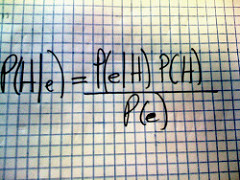One of the staunchest defenders of a mythicist view of Christ, Earl Doherty, maintains that the apostle Paul thinks that Jesus was crucified, not here on earth by the Romans, but in the spiritual realm by demonic powers. In advancing this thesis, Doherty places him self in an ironic position that characterizes many of his mythicist colleagues. He quotes professional scholars at length when their views prove useful for developing aspects of his argument, but he fails to point out that not a single one of these scholars agrees with his overarching thesis. (Bart Ehrman in Did Jesus Exist? my emphasis)
Can Earl Doherty ever have stooped so low! Quoting scholars when it suits but not informing his readers that they were not mythicists? What deviousness! This has to be outright deceit, of course, since if he really believed they were mythicist he would have shouted that out in bold caps.
Given the track record I have addressed in my previous posts I am sure we know just how much evidence we can dig up against Doherty to support Ehrman’s accusation. Ehrman also implies that Doherty only refers to scholars when “their views prove useful” to developing his argument. How sneaky!
Let’s try to trace just how dishonest this man is. Let’s begin with the Preface to his book, Jesus, Neither God Nor Man.
He fails to point out?
On the very opening page of his book, in his Preface, Earl Doherty refers to the Christ Myth as “such a radical idea” that when it was referenced on a popular TV show he believes very few in audiences would have even recognized what was expressed. He refers to it on that same page as “a fringe idea”. On that page, the first page of his book, he sets his thesis in opposition to “traditional academia” and “mainstream critical scholarship”. The bulk of those who currently embrace the idea for now are “amateurs” whom he defines as “those who undertake private study outside an official educational setting.”
The same theme dominates right through to the last page of that Preface where Doherty acknowledges his debt to traditional New Testament scholarship. He describes his debt to this as “immense” even though he is obviously presenting a thesis at radical odds with the assumptions and beliefs of that scholarship. This theme of his view being in stark opposition to traditional mainstream scholarship is sustained throughout the book. Would anyone who picks up JNGM really suspect for a moment that Doherty is supported by a significant number of mainstream New Testament scholars?
But let’s get to the nitty gritty. Does Doherty at any point mislead his readers into thinking that mainstream scholars he quotes might somehow support his mythicist argument? Continue reading “Devious Doherty or Erring Ehrman?”






